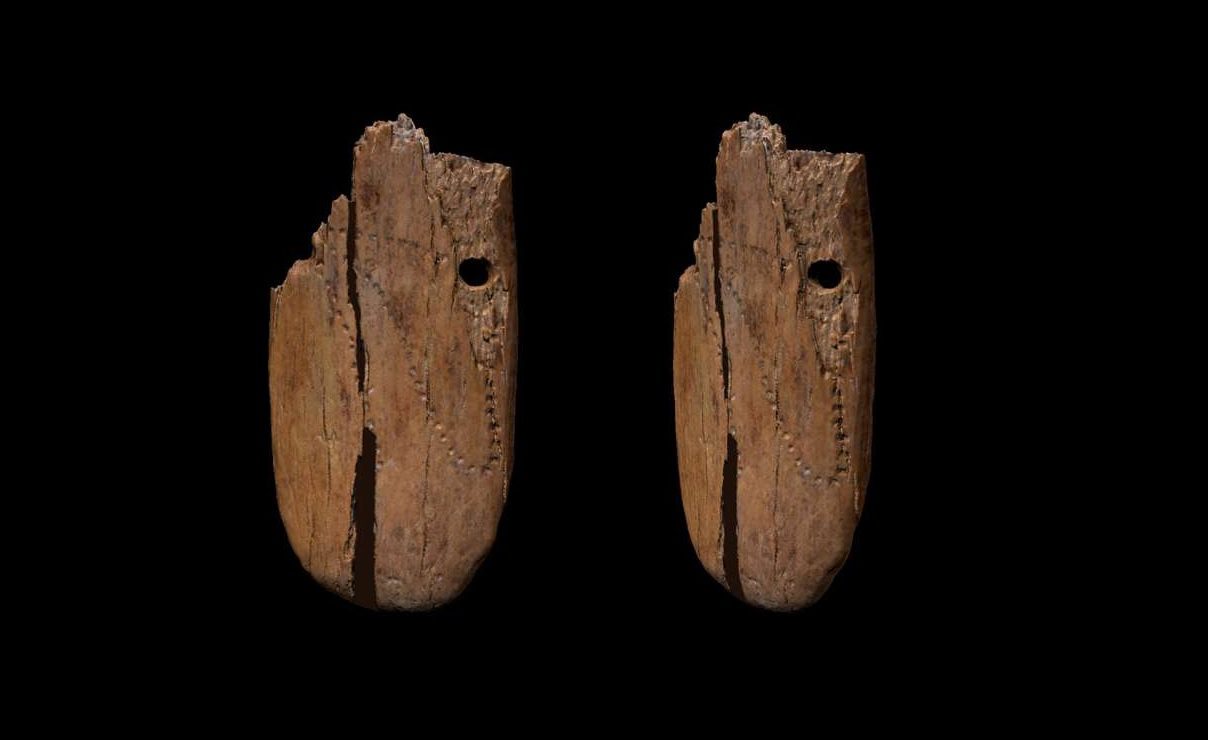A pendant made from mammoth ivory may be the earliest example of decorated jewellery found in Eurasia.
The pendant was discovered in the Stajnia Cave, a natural rock shelter located on the northern side of the Kraków-Częstochowa Upland in southern Poland
The site has been investigated since 2006, where researchers found a series of Neanderthal remains within a large collection of bones of Late Pleistocene steppe-tundra species, in addition to Middle and Upper Palaeolithic artefacts left by Homo Sapiens.
Finds include an awl fragment, animal bones, some stone tools and pieces of a pendant made from mammoth ivory decorated with 50 dots that draw an irregular circular curve. Researchers dated the pendant using a radiocarbon analysis that places the find to 41,500 years ago.
The pendant was also analysed with digital methods, starting with a micro-tomographic scan to virtually reconstruct the artefact, allowing the detailed measurement and study of the decorations.
From the beginning of their dispersal in central and western Europe, groups of Homo sapiens began to use the ivory of mammoth tusks for the production of pendants and figurines, and sometimes to decorate them with geometric patterns. The alignment of dots can be found in similar finds from southwestern France and in some figurines from the Swabian Alb in Germany.
Wioletta Nowaczewska of the University of Wrocław said: “The pendant shows great creativity and extraordinary manual dexterity of the Homo sapiens that occupied the site: the thickness of the plaque is about 3.7 millimetres and shows the surprising precision in engraving the dots and the two holes to wear it.”
Adam Nadachowski from the Institute of Systematics and Evolution of Animals Polish Academy of Science said: “Whether these signs indicate a lunar calendar, or a count of hunted prey is yet to be discovered; however, it is fascinating that similar decorations have appeared so independently from one part of Europe”.
Header Image Credit : Antonino Vazzana/BONES Lab





